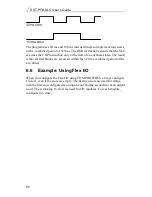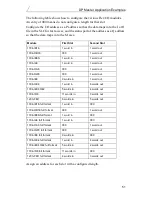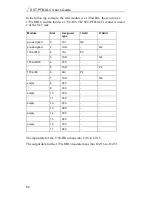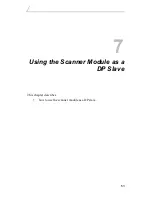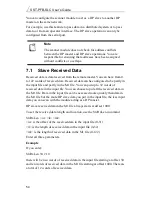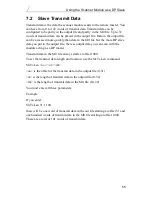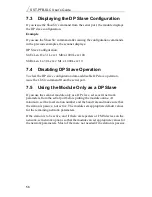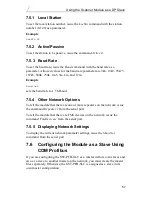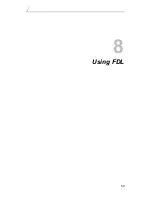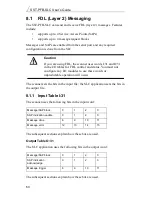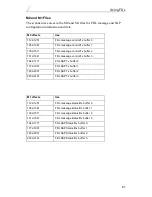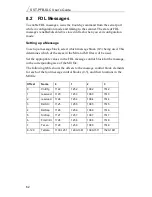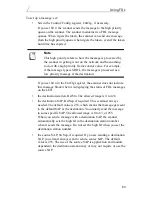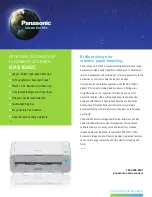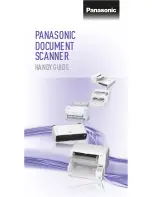
SST-PFB-SLC User’s Guide
60
8.1
FDL (Layer 2) Messaging
The SST-PFB-SLC can send and receive FDL (layer 2) messages. Features
include:
•
supports up to 4 Service Access Points (SAPs)
•
supports up to 4 message request blocks
Messages and SAPs are enabled from the serial port and any required
configuration is done from the SLC.
The scanner sets the bits in the input file; the SLC application sets the bits in
the output file.
8.1.1 Input Table I:31
The scanner uses the following bits in the input word:
The subsequent sections explain how these bits are used.
Output Table O:31
The SLC application uses the following bits in the output word:
The subsequent sections explain how these bits are used.
Caution
If you are using FDL, the scanner uses words I:31 and O:31
in the I/O tables for FDL control and status. You must not
configure any I/O modules to use these words or
unpredictable operation will occur.
Message/SAP block
0
1
2
3
SAP indication update
0
1
2
3
Message done
8
9
10
11
Message error
12
13
14
15
Message/SAP block
0
1
2
3
SAP indication
acknowledge
0
1
2
3
Message trigger
8
9
10
11
Summary of Contents for SST-PFB-SLC
Page 7: ...Contents vii Technical Data 105 Index 107 A...
Page 8: ...SST PFB SLC User s Guide viii...
Page 14: ...SST PFB SLC User s Guide 6...
Page 20: ...SST PFB SLC User s Guide 12...
Page 34: ...SST PFB SLC User s Guide 26...
Page 53: ...45 6 DP Master Application Examples...
Page 56: ...SST PFB SLC User s Guide 48 Sample Program...
Page 57: ...DP Master Application Examples 49 Sample continued...
Page 66: ...Using the Scanner Module as a DP Slave 58...
Page 67: ...59 8 Using FDL...
Page 75: ...Using FDL 67 Sample Program...
Page 76: ...SST PFB SLC User s Guide 68 Sample Continued...
Page 80: ...SST PFB SLC User s Guide 72 Sample Program...
Page 81: ...SST PFB SLC User s Guide 73 Sample Continued...
Page 85: ...SST PFB SLC User s Guide 77...
Page 86: ...SST PFB SLC User s Guide 78...
Page 87: ...79 9 Diagnostics This chapter describes system diagnostics...
Page 105: ...97 11 Network Parameter Defaults This chapter describes network defaults...





